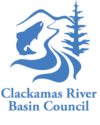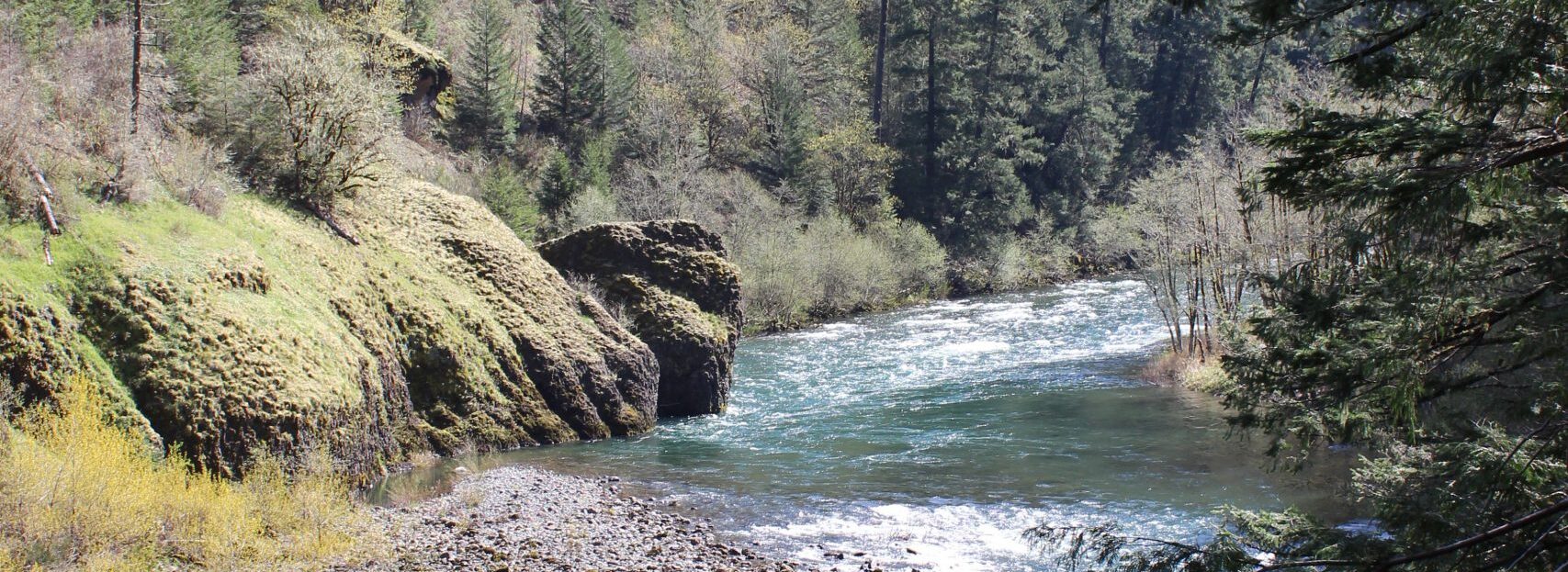Our Mission
We foster partnerships for clean water and to improve fish and wildlife habitat and the quality of life for those who live, work and recreate in the watershed.
Land Acknowledgement
The Clackamas River Basin Council recognizes that our work takes place on the lands of many Native Peoples. We acknowledge the many communities, their elders both past and present, as well as future generations. This acknowledgement demonstrates a commitment to beginning the process of working to dismantle the ongoing legacies of settler colonialism. We thank those who came before us for their stewardship of these lands and waters, and those who continue to steward them now and in the future.
What is a watershed?
The Clackamas River Basin is composed of many smaller watersheds. The term watershed is used to describe an area of land that drains to river, stream, lake or wetland. Because we all live on the land, we all live in a watershed — so watershed health is important to everyone. In a river basin, all the water drains to a large river like the Clackamas River.
The Clackamas River Basin Council is a locally organized, non-governmental group of citizens that was formed to protect and improve the Clackamas River Basin and its watersheds. The council is dedicated to making our river basin a better place to live, work and recreate.
What’s a Watershed Council?
Oregon has around 90 recognized watershed councils. Watershed councils are local, non-regulatory and non-governmental groups. They are formed by citizens with an interest in the condition of the watershed for a variety of reasons. Many of Oregon’s watershed councils were established in the late 1990s in response to environmental pressures that were impacting native salmon populations. Between 1991 and 1999, a dozen salmon and steelhead populations in the Pacific Northwest were listed for protection under the federal Endangered Species Act. The listings generated concern among citizens, as well as state and local governments.
How Are Watershed Councils Formed?
In 1987, the state of Oregon initiated the Governor’s Watershed Enhancement Board, and in 1995, the Watershed Health Program was created and provided funding to support the establishment of local watershed councils. Additional funding was made available in 1998 with lottery revenues. This funding support from the state has been instrumental to citizen groups wanting to create and sustain a watershed council in their area.
In 1997, the Oregon Plan for Salmon and Watersheds was placed into statute, then in 1999 the Oregon Watershed Enhancement Board (OWEB) was created as a state agency to administer the plan. OWEB makes funds available to watershed councils, including the Clackamas River Basin Council for watershed restoration and protection.
Establishment of a council is a local government decision made by a city, county, water supply, or sewer district. Two primary guidelines are provided by legislation: (1) that the watershed council be a voluntary, local group and (2) that the council represent a balance of interested and affected persons within the watershed. Watershed councils are composed of people from the local communities. They represent local knowledge and understand the local community and its complexities.
Some watershed councils form as non-profit corporations or adopt other formal organizational structures while others organize as informal groups. Many councils work closely with local soil and water conservation districts, council of governments, and resource conservation and development districts.

